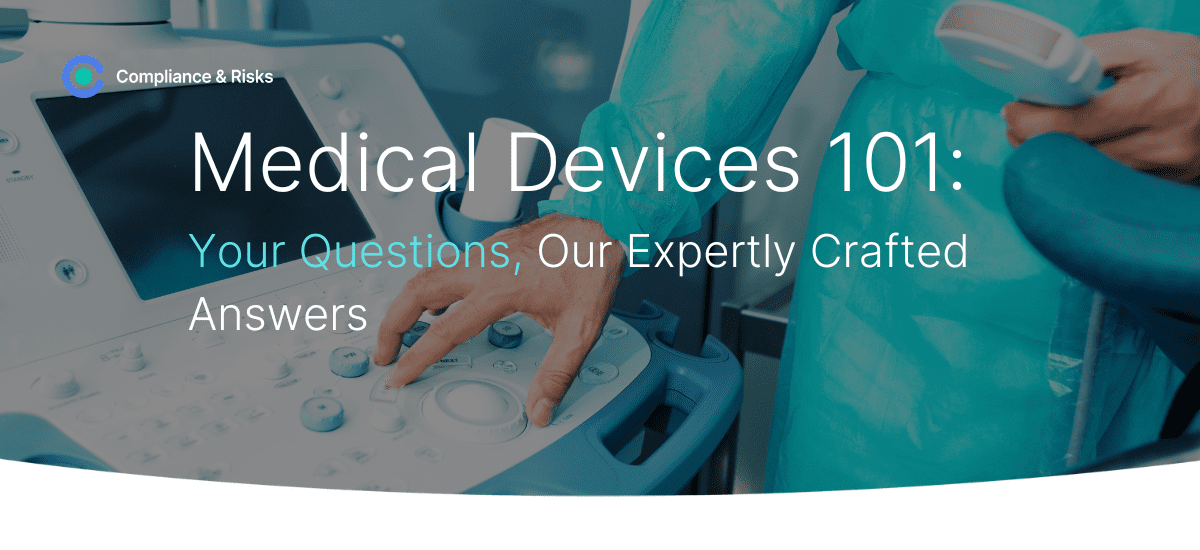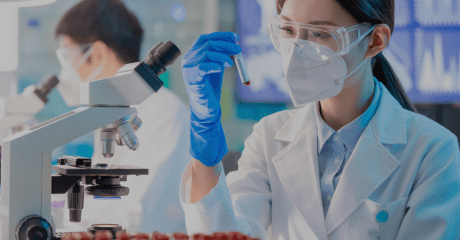
Medical Devices 101 | Your Questions | April 2024

Medical devices face a unique regulatory landscape that has been increasingly complicated by several factors in recent years.
The demand for more sustainable technology is being driven by both consumer demand and legislators, leading to regulatory implications. Global events such as Brexit and COVID-19 have also created unprecedented challenges.
As devices become increasingly integrated with artificial intelligence and an internet connection, new cybersecurity and data protection legislation is racing to keep up.
And on top of all this, the new regulatory framework for IVDR and proposed amendments for the registration, and inspection of medical devices under MDR means staying ahead is more critical than ever.
In this series, we gather some of the most interesting recent inquiries from Compliance & Risks customers regarding medical device regulatory updates globally.
Question 1: Is the Ukrainian draft resolution on the safety of chemical products similar to EU REACH?
The Ukrainian draft resolution on the safety of chemical products, is widely considered as a REACH-like regulation as it incorporates most of the EU REACH features. This is evidenced in Annex XVIII which provides a comparative analysis of the regulatory alignment and differences between the draft and the EU REACH. Sections 17-19 set out the general requirements for the registration and notification of chemicals, whilst Sections 21-25 specify provisions governing the registration and notification of chemical substances included in products.
As per the draft decree detailing the implementation of the draft regulation, the following registration deadlines shall apply depending on the tonnage:
- By 01 June 2025 for substances > 1000 tons,
- By 01 June 2026 for chemicals between 100-1000 tons and
- By 01 June 2027 for chemicals between 1-100 tons.
As regards general exemptions, Sections 8 and 9 indicate that the requirements underlined in the draft Technical Regulation do not apply to:
- Radioactive materials;
- Chemical products under customs control, if they are temporarily stored in free trade zones or warehouses for re-export or transit and are not processed or treated;
- Unisolated intermediate chemicals;
- Dangerous goods transported by air, sea, road, rail or inland waterway;
- Waste production and consumption of chemical products in terms of the Law of Ukraine “On Waste” dated 05.03.1998 No. 187/98-VR;
- Chemical products that are medicinal products;
- Scientific research and development;
- Food and feedstuffs;
- Medicinal products.
On the 59 substances subject to authorization in Annex XIV of the draft which are identical to REACH Annex XIV, forty four have been assigned unrealistic latest application date (01 January 2025), and sunset date (01 January 2026). Finally, the list of restricted substances in the proposed Annex XVII reflects 76 entries out of the current 78 entries included in REACH Annex XVII.
Question 2: Are medical devices in scope of the Russian Federation: Implementation of Rotterdam Convention on PIC, Government Resolution No. 22/2012 – Amendment – (on Register of Potentially Hazardous Chemical and Biological Substances etc) Government Resolution No. 609/2013?
This Russian Government Resolution approves the creation of the Federal Register of Potentially Hazardous Chemical and Biological Substances which shall contain information related to hazardousness of chemicals and biological substances, including pesticides, identification thereof, sphere of application and rate and maximum allowable limits of contents thereof in the natural environment.
The Resolution does not specify any exemptions. Given that Russia is party to the Rotterdam Convention since 28 April 2011, this Resolution may only cover banned or severely restricted chemicals; and severely hazardous pesticide formulations. In line with the Convention, it may not apply to:
- Narcotic drugs and psychotropic substances;
- Radioactive materials;
- Wastes;
- Chemical weapons;
- Pharmaceuticals, including human and veterinary drugs;
- Chemicals used as food additives;
- Food;
- Chemicals in quantities not likely to affect human health or the environment provided they are imported:
- (i) for the purpose of research or analysis; or
- (ii) by an individual for his or her own personal use in quantities reasonable for such use.
Question 3: Are there any reporting requirements for medical devices in Connecticut (USA): Use of PFAS in Certain Products, Senate Bill 292, 2024?
This bill would not require reporting of PFAS to determine its presence – the definition at (h)(2) exempts medical devices from the requirement to test etc.: Section (d) and (e):
256 (2) The provisions of subsections (d) and (e) of this section shall not 257 be construed to apply to any prosthetic or orthotic device or to any 258 product that is a medical device or drug or that is otherwise used in a 259 medical setting or in medical applications regulated by the United States 260 Food and Drug Administration.
and from 21 U.S. Code § 321 – Definitions; generally – referred to in the section above, defines Device as a medical apparatus/function.
Section 20 on reporting requirements refers to “Products” which are defined as “consumer products”, which would not be Medical Devices.
(20) “Product” means any item manufactured, assembled, packaged or otherwise prepared for sale to consumers, including, but not limited to, its product components, sold or distributed for personal, residential, commercial or industrial use, including for use in making other products.
Stay Compliant With Global Medical Device Regulations:
Catch up on our medical device updates with your coffee here:
- Medical Device Regulation Checklist: Brazil
- Regulatory Trends in Medical Devices: A 12-18 Month Outlook
- Software As A Medical Device – Definition and Classification in the EU, USA, China, and Japan
- European Union (EU) In Vitro Diagnostic Regulation 2017/746 (IVDR) and Cybersecurity
Have you got a Medical Device related query?
Many of the above questions were submitted and answers were conveyed by Compliance & Risks customers via the “Ask Our Experts” button in C2P.
Clients use AOE to ask about the latest proposed, enacted, and amended regulations and mandatory standards applicable to their products and geographies of interest.
When AOE questions can be answered in 30 minutes or less, Compliance & Risks’ subject matter experts answer them at no charge!
To learn more about C2P and how Compliance & Risks SMEs can help you with your questions, contact us today.
Meet our Experts

Global Regulatory Compliance Team
Our team of experts will elevate your strategic edge by addressing questions about laws and regulations. Fluent in almost 30 languages and backed by an extensive database of 82,000 sources, our experts bring unparalleled knowledge to the table. Moreover, our expert team is dedicated to educating your organization, fostering better engagement, and ensuring your compliance and risk management strategies are second to none. With our team of seasoned professionals by your side, you’ll gain a competitive edge in navigating the complex landscape of compliance management, gaining deeper insights and valuable guidance.



